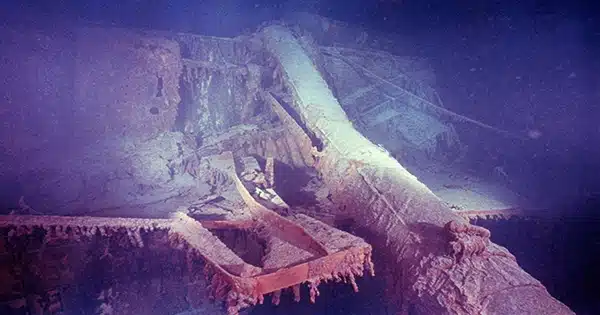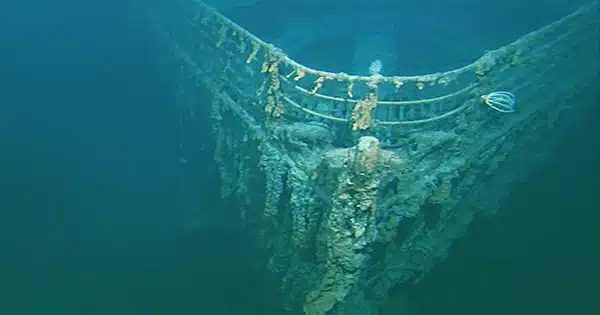When the Titan, a tragic submersible, imploded when the crew attempted to explore the Titanic wreck in June 2023, people began asking a lot of questions regarding implosions, especially why the Titanic itself did not disintegrate despite its lower depth.
One such mystery, raised several times over the last year, is why champagne bottles discovered aboard the Titanic did not implode. Instead, some bottles look to be somewhat intact.
“Remember how the Titan submarine was installed-crushed last year while traveling partway to see the Titanic wreck? Despite their lax safety measures and shortcuts, it was still a titanium case built to withstand such depths,” one such inquiry was asked in the highly regarded Facebook community the Journal of Scientific Shitposting. “So how did a simple glass bottle filled with champagne not shatter?”

First, let’s look at why implosions happen. Implosions occur when objects collapse in on themselves due to a pressure difference between the internal and exterior environments. When the pressure becomes too much for a submarine’s hull to bear, it causes a violent implosion that equalizes the pressure within and outside the vessel.
Implosions can also occur at the surface as long as the inside of an object has a lower pressure than the outside, such as when the air inside a tank is removed to produce a vacuum.
There is no “except for bottles” or “except for Titanic” regulation. Parts of the Titanic did implode. The components that did not collapse avoided this extremely catastrophic occurrence because the air had been released from within, resulting in equal pressure on the outside and inside (conditions under which implosion does not occur).
So, how did the bottle avoid this fate? People have argued that the increased pressure inside the champagne bottle, generated by the carbon dioxide, is part of the solution. The pressure inside a champagne bottle is higher than you’d expect, reaching roughly 6 bar (90 psi), with 1 bar being atmospheric pressure at sea level. Today’s champagne is stored in bottles that can resist up to 20 bar (290 pressure), with a metal fastening often used to keep the cork in place.
So, at the outset of its voyage to the bottom of the ocean, the champagne bottle was not in danger of imploding. Old champagne has already been discovered at depths of 50 meters (164 feet), unbroken, and still drinking. In reality, as it began to drop, the pressure difference between the interior and outside decreased, until it reached a depth of approximately 60 meters (197 feet), where the pressure was roughly 6 bar (90 psi). The pressure difference would then start to increase dramatically. The Titanic is approximately 3,800 meters (12,500 feet) underground and under 381 bar (5,532 psi) of pressure.
Unless glass manufacturers in the nineteenth century CE designed bottles that could endure such outrageously high pressures “just for a laugh,” there must be another reason why they did not implode. Even if “strong glass” were part of the solution, the pressure differential would force the cork into the bottle before it reached the Titanic’s depths.
The mangled cork on top of the bottle is most likely the clue. For a bottle to survive implosion at this depth, like the Titanic’s unbroken portions, water must have entered to equalize the pressure inside and outside the container.
“I know you guys have mentioned uncorked champagne bottles discovered in the Titanic wreckage, which lies even deeper at 3.8 km,” YouTube channel The Dropzone said. “It would be amazing if the seal held, but I reckon all the seals have already been compromised and the pressure inside equalized with the pressure outside when the ship sank on its way down back in 1912.”
This may have happened fast, as shown in the video presentation, or more slowly, as the cork descended and became squeezed by the immense pressure.
















